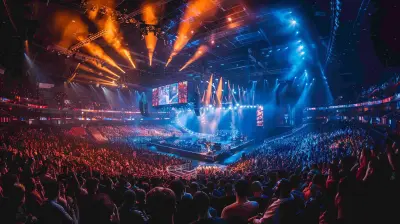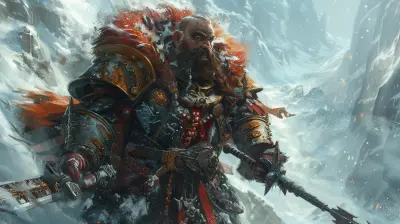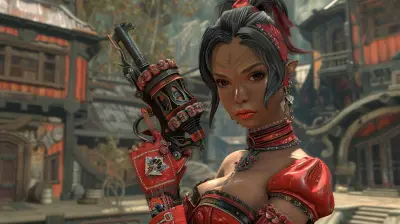The Influence of Classic Games on Modern Third-Person Shooter Design
26 April 2025
Hey there, gamer! Let’s take a trip down memory lane today and dive into how classic games have left their fingerprints all over the design of modern third-person shooters (TPS). You might not think twice about the cover systems, fluid movement mechanics, or over-the-shoulder camera angles in your favorite TPS games. But have you ever stopped to wonder, "Where did all this start?" Well, you’re in for a treat because we’re going to break it all down in this article!
Classic games didn’t just entertain us back in the day—they set the stage for the industry as we know it. Each pixelated explosion and clunky yet groundbreaking mechanic has helped modern developers craft those epic third-person shooters we can't get enough of. Buckle in because we’re about to connect the past to the present in a way that might just make you fire up some retro classics tonight.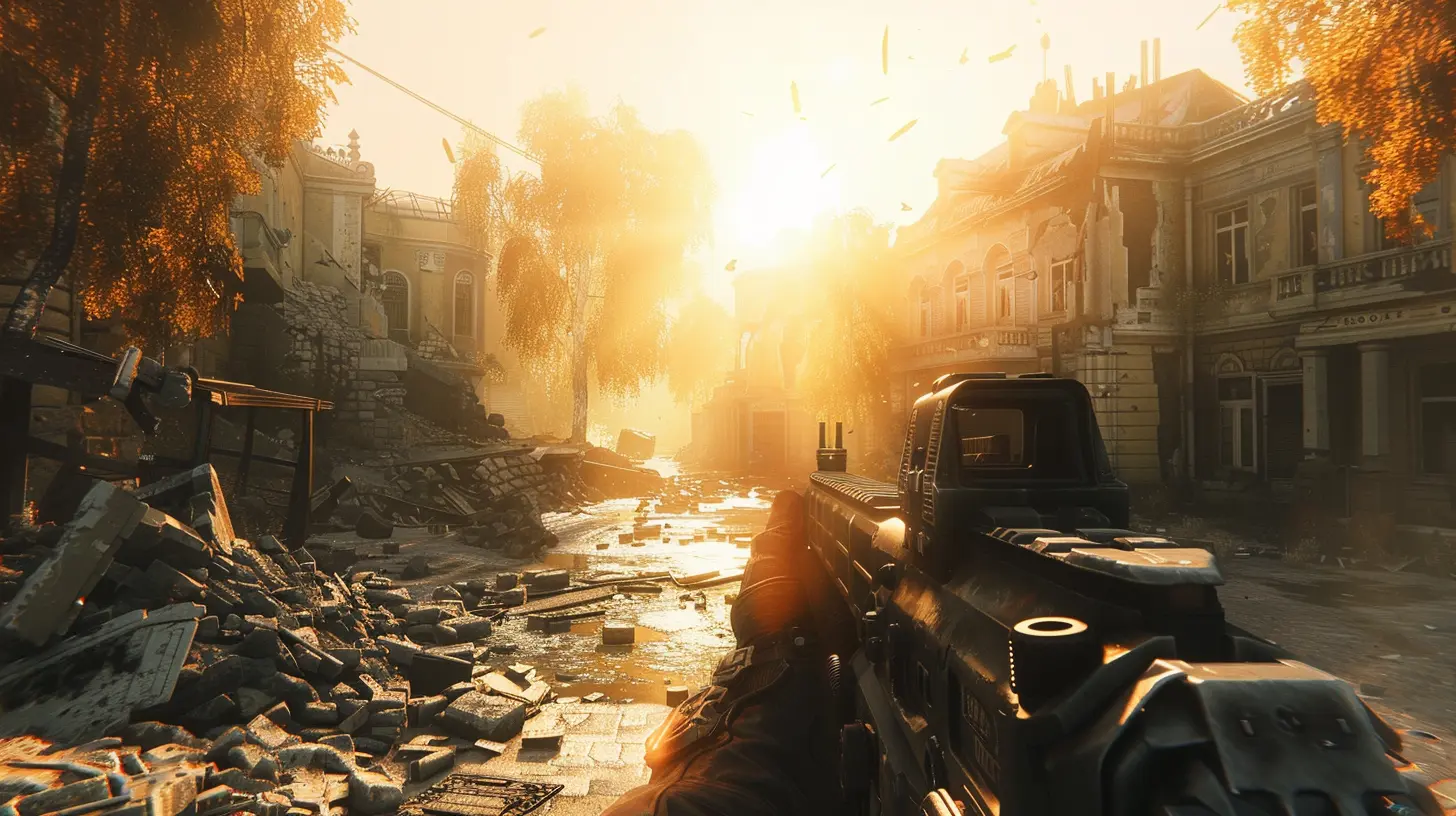
What Are Third-Person Shooters Anyway?
Before we get into the nitty-gritty, let’s quickly cover what third-person shooters are. Think of them as action games where the camera sits behind your character, giving you a clear view of their movements while still letting you aim and shoot. It’s a hybrid of tactical gameplay and visceral action—you get the best of both worlds!Third-person shooters like Tomb Raider, Gears of War, and The Last of Us are staples in the gaming world now. But back in the day? Oh, things were a bit more... shall we say, experimental. And that experimentation is exactly what paved the way for the jaw-dropping visuals and immersive mechanics we enjoy today.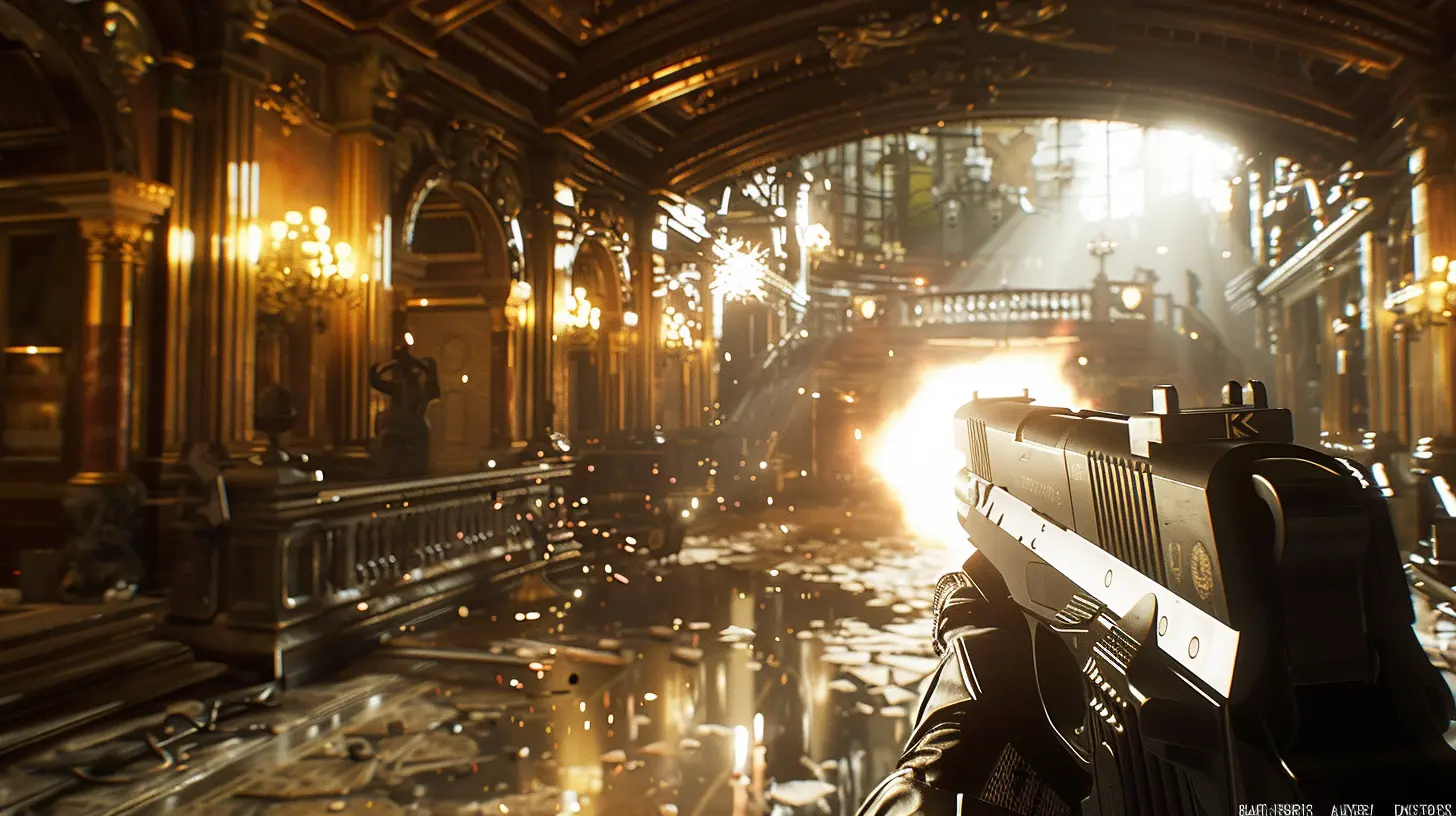
The Roots of Modern TPS Design: Where It All Started
If you’re a fan of third-person shooters, you owe a lot to the golden era of gaming. Back in the ‘80s and ‘90s, developers were throwing ideas at the wall, hoping something would stick. And guess what? A lot of those ideas shaped the DNA of modern third-person shooters.1. The Birth of Perspective: Games Like Spacewar! and Zaxxon
Let’s rewind all the way back to the dawn of gaming. Early games like Spacewar! (1962) and Zaxxon (1982) experimented with perspectives, planting the seed for what would become the third-person camera. While these were nowhere near the over-the-shoulder views we know today, they introduced players to the idea of seeing action unfold around their avatar.What’s the big deal with perspective? Well, it’s everything in TPS design. These early games forced developers to think about camera angles and how they affect both gameplay and immersion. It’s safe to say that without these pioneers, third-person shooters might still be stuck in the realm of awkward top-down views.
2. Cover Systems: Thank You, Metal Gear Solid
Ah, the old-school stealth-action classic Metal Gear Solid (1998). This gem from Hideo Kojima wasn’t a straight-up TPS, but it gifted modern third-person shooters with one of their most iconic mechanics: the cover system. Who knew that crouching behind a box could be so game-changing?The cover system in Metal Gear Solid wasn’t just about hiding—it added tension, strategy, and tactical depth to gameplay. Fast forward to today, and you’ll notice this mechanic in games like Gears of War and Uncharted. In fact, it’s hard to imagine a modern TPS without the ability to duck behind cover when the bullets start flying.
3. Over-the-Shoulder Camera: Resident Evil 4 Set the Standard
If you’ve ever played Resident Evil 4 (2005), you know exactly how much of a revolution it was. This game essentially defined the modern third-person perspective by sticking the camera right over the protagonist’s shoulder. You weren’t just playing as Leon Kennedy—you were Leon Kennedy.This camera style gave players a sense of closeness and urgency. Suddenly, every zombie encounter felt personal. Today, that same over-the-shoulder perspective is the bread and butter of most TPS games, from The Last of Us Part II to Control.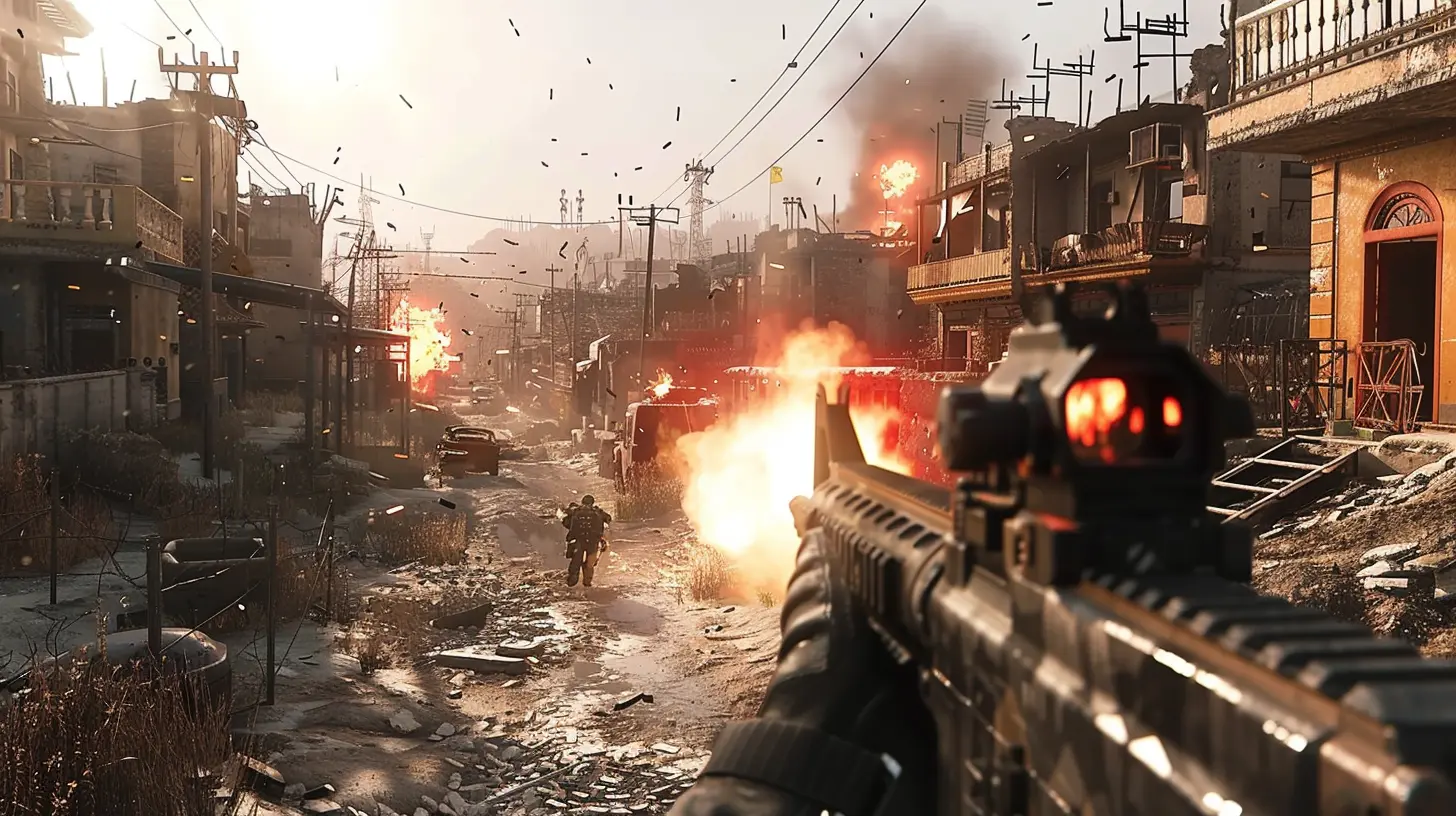
How Classic Games Inspired Modern Gameplay Mechanics
It’s not just the camera angles or cover systems that classic games influenced. They also shaped the very way we play modern TPS games. Let’s hit a few highlights.1. Weapon Variety and Loadouts: Remember Doom?
Alright, Doom (1993) wasn’t a TPS—it was a first-person shooter (FPS). But hear me out. Its approach to weapon variety and loadouts has echoes in modern TPS design. Think about it: you’ve got your pistols, shotguns, rocket launchers, and everything in between. Sounds familiar, right?Take a game like Mass Effect 3. Sure, it’s a third-person shooter with RPG elements, but the way it handles weapon variety screams Doom. Classic games like Doom taught developers that players love having an arsenal at their fingertips, and TPS games have been running with that ever since.
2. Movement Mechanics: Shoutout to Prince of Persia
Ever wonder why modern TPS games have such smooth movement systems? Credit where credit is due—games like Prince of Persia (1989) gave developers a crash course in creating fluid animations and parkour mechanics. You can see its DNA in games like Assassin’s Creed and Tomb Raider, which rely on smooth traversal to keep players engaged.3. Enemy AI: The Halo Effect
Yes, I know—Halo is another FPS, but it’s impossible to ignore how its approach to enemy AI influenced modern shooters. TPS games like Gears of War picked up where Halo left off, creating intelligent enemies that adapt to your playstyle. No more brain-dead foes running straight into your line of fire. Classic games forced developers to level up their AI game, and we’re all better off for it.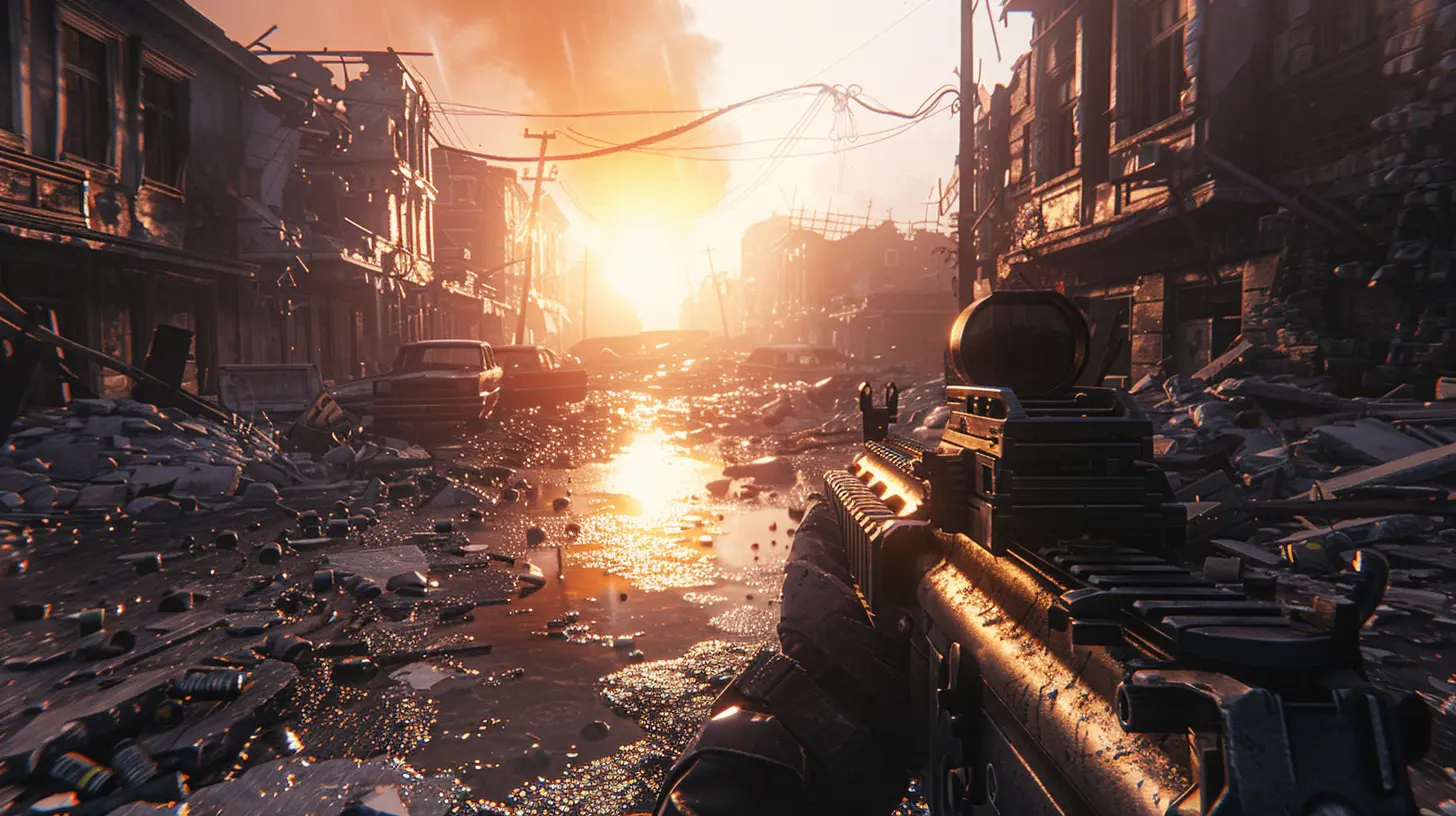
The Ripple Effect: Why Classic Games Still Matter
Okay, so now we know how classic games influenced modern TPS design, but why does it matter? Well, for starters, it proves that innovation doesn’t happen in a vacuum. Every great mechanic or feature in your favorite third-person shooter has a lineage that stretches back decades.But beyond that, understanding this history gives us a deeper appreciation for the games we play today. It’s like listening to your favorite band and then discovering the artists who inspired them—it’s all connected. Plus, let’s be real: sometimes firing up an old-school classic is the perfect way to remind yourself why you fell in love with gaming in the first place.
What the Future Holds for Third-Person Shooters
Looking ahead, it’s exciting to think about where TPS games are headed. Developers continue to borrow from the past while introducing new twists that keep the genre fresh. Whether it’s larger open worlds, more advanced AI, or even tighter shooting mechanics, you can bet the influence of those classic games will still be there.Who knows? Maybe in 20 years, we’ll be talking about today’s TPS games as the “classics” that inspired the next big thing. Talk about a full-circle moment.
Wrapping It Up
And there you have it, folks—a nostalgic yet forward-looking take on how classic games have shaped modern third-person shooters. From the experimental days of clunky graphics and rudimentary mechanics to the polished, cinematic experiences we enjoy now, every step of the journey has been crucial.Next time you duck behind cover in Gears of War or line up a headshot in The Last of Us Part II, take a moment to appreciate the classics that made it all possible. Because without those early pioneers, we wouldn’t have the incredible games we do today.
all images in this post were generated using AI tools
Category:
Third Person ShooterAuthor:

Francesca West
Discussion
rate this article
6 comments
Rusty McTier
Classic games laid the foundational mechanics and narrative depth that modern third-person shooters build upon. Their innovative approaches to storytelling and gameplay continue to resonate, reminding us that the essence of gaming transcends graphics, evolving from the simplicity of earlier titles into complex, immersive experiences.
May 11, 2025 at 4:46 AM

Francesca West
Absolutely! Classic games set the stage for modern mechanics and storytelling, proving that great gameplay and narrative can shine through any graphics. Their legacy lives on in today’s immersive experiences.
Oren Reyes
Classic games truly shape today’s shooters—what a wonderful evolution!
April 30, 2025 at 2:29 PM

Francesca West
Thank you! It's fascinating to see how classic games laid the groundwork for modern designs, shaping gameplay mechanics and player experiences in innovative ways.
Zayn McCracken
This article effectively highlights how classic games laid the groundwork for modern third-person shooters. By examining key mechanics and design elements, it’s clear that nostalgia and innovation go hand in hand. Understanding these influences not only enriches our gaming experience but also shapes the future of the genre. Great read!
April 29, 2025 at 5:07 PM

Francesca West
Thank you for your insightful comment! I'm glad you found the connections between classic games and modern shooters compelling. Your appreciation for the blend of nostalgia and innovation truly captures the essence of the article!
Delia McIlroy
Classic games laid the groundwork, but let’s face it: modern third-person shooters are like classic cars with GPS—nostalgic charm meets flashy upgrades. Can't we all just appreciate the ride?
April 28, 2025 at 4:08 PM

Francesca West
Absolutely! Classic games set the foundation, while modern innovations enhance the experience—it's the perfect blend of nostalgia and progression. Let's celebrate both!
Elara Marks
Who knew that dodging pixelated bullets in the '80s would lead to today's epic dance-offs with virtual enemies? Classic games taught us all: shoot first, ask questions later—preferably in HD!
April 27, 2025 at 4:32 AM

Francesca West
Absolutely! Classic games laid the groundwork for today's immersive experiences, blending action and creativity in ways that resonate with both gameplay and culture.
Evren McIlroy
Fascinating exploration! It’s intriguing to see how classic games have shaped modern third-person shooters. Which specific mechanics or narratives do you think have had the most lasting impact on today’s designs?
April 26, 2025 at 3:47 PM

Francesca West
Thank you! I believe mechanics like cover systems and narrative-driven campaigns from classics have profoundly influenced modern designs, enhancing player engagement and storytelling.

